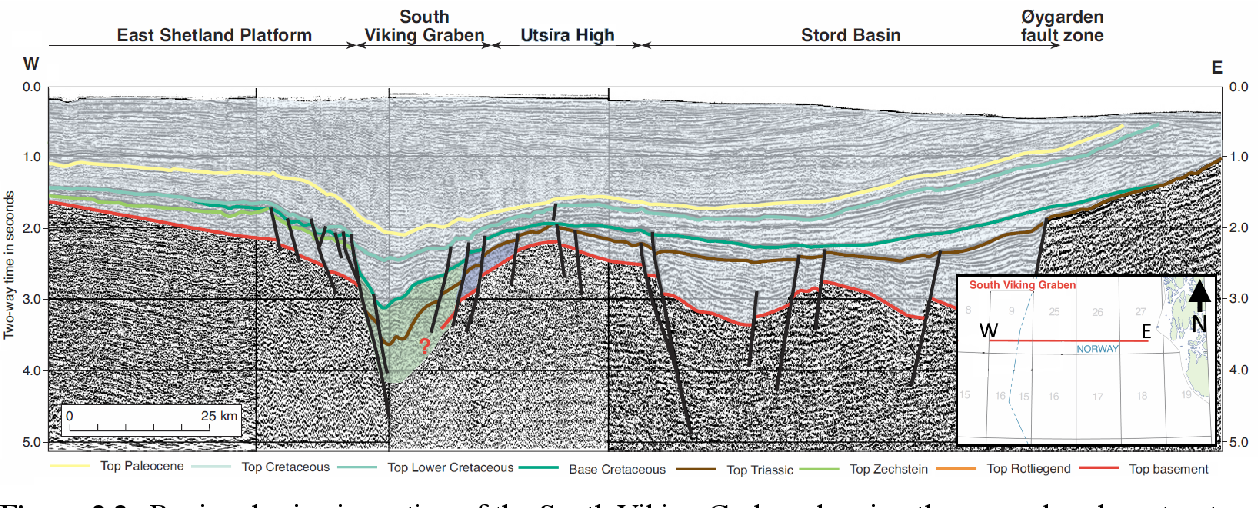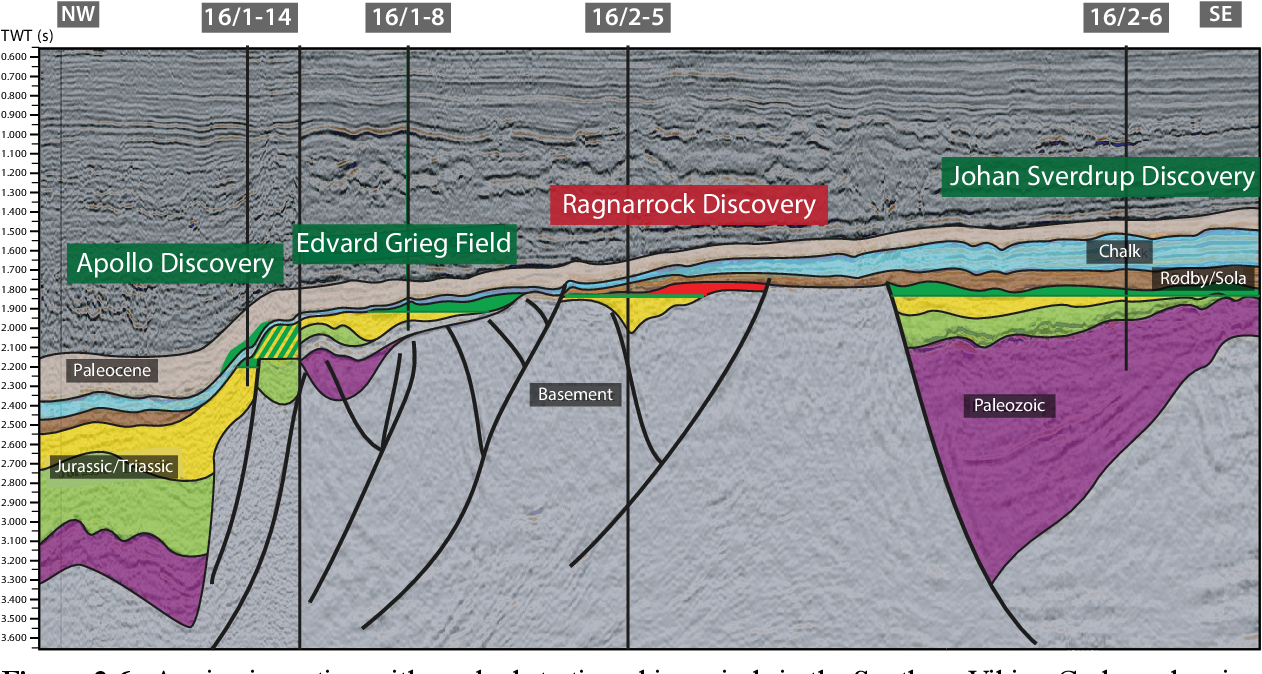Johan Sverdrup Field Geology
The Johan Sverdrup field will at maximum production contribute 25 of total oil production from the Norwegian continental shelf. Strike at Equinors Johan Sverdrup Field.

Pdf The Petroleum Geochemistry Of The Johan Sverdrup Field Southern Utsira High Norwegian North Sea Semantic Scholar
Johan Sverdrup is a giant field with an.

Johan sverdrup field geology. Sandstones of the Johan Sverdrup Field Central North Sea Hans-Martin Kaspersen Master Thesis Geology 60 credits Department of Geosciences The Faculty of Mathematics and Natural Sciences UNIVERSITY OF OSLO 0112 2016. Johan Sverdrup offshore field discovery geology and reserves The Johan Sverdrup oil and gas field is located in the Utsira High which lies south-west of the Norwegian continental shelf. Johan Sverdrup will now produce 27 billion barrels of oil at present estimates which will generate more than 900 billion kroner for Norway over the next 50 years.
Johan Sverdrup is a field on the Utsira High in the central part of the North Sea 65 kilometres northeast of the Sleipner fields. The giant Johan Sverdrup field was discovered in 2010 by well 162-6 drilled on the Utsira high in the central part of the Norwegian North Sea. Geochemical formation-water interpretation and development of a scale-management strategy have been performed to ensure high well productivity and process regularity of.
On October 5th 2019 the giant Johan Sverdrup field in Norway started Phase 1 production over two months ahead of schedule and 30 below the initial budget. The Johan Sverdrup discovery is one of the largest oil discoveries made on the Norwegian Continental Shelf and will prolong the life of the Norwegian oil industry for several decades generating revenue and providing jobs for generations to come. Johan Sverdrups 50-year lifespan As one of the five biggest oil fields on the Norwegian continental shelf Johan Sverdrups production horizon is expected to stretch well into the latter part of this century.
Initial plateau production was 440000 barrels of oil per day and has during the. The development solution for the first development phase is a. The water depth is 115 metres.
Geochemical formation water interpretation and development of a scale management strategy have been performed to ensure high well productivity and process regularity of. Johan Sverdrup in Brief. Johan Sverdrup was discovered in 2010 and the plan for development and operation PDO for Phase I was approved in 2015.
Electrifying the Johan Sverdrup oil and gas field. The Aldous Major North is a minor field discovered by the 162-9S well which was drilled to a depth of 2047m in September 2011. This area was considered exhausted after more than 40 years of disappointing on-and-off exploration drilling.
The estimated in-place hydrocarbon volume of the giant Johan Sverdrup field is 35 billion barrels of oil the bulk of which is contained in the Upper Jurassic intra-Draupne Formation sandstone. Due to a breakdown in talks. It consists of two oil discoveries named Avaldsnes and Aldous which were discovered in 2010 and 2011 respectively and located at a water depth of 110m-120m.
The Johan Sverdrup field will at maximum contribute 25 of the total oil production from the Norwegian Continental Shelf NCS. In addition all of our barrels from the field are certified as carbon neutrally produced. One barrel of oil produced at Sverdrup has emitted 017 kilogrammes of CO 2 in the first year almost 100 times lower CO 2 emissions than the global average measured in kilogrammes of CO 2.
Johan Sverdrup Equinor Published Sep 30 2020 959 PM by The Maritime Executive. Ross Davies looks at the project which is set to help create one of the most carbon-efficient oil and gas fields in the world. Geology and reserves of the Johan Sverdrup field.
Plateau production from the fully developed field is estimated at 550000 to 650000 BOED. The North Sea field which has an output capacity of around 535000 barrels of oil per day suffered a power outage on. The Johan Sverdrup Phase 2 development project involves a second processing platform subsea facilities to access the Avaldsnes Kvitsøy and Geitungen satellite areas of the field and the drilling of 28 additional wells.
The PDO for Phase 2 project was approved in May 2019 and is progressing according to plan with first oil expected in the. In May Norwegian oil producer Equinor formerly known as Statoil began laying a cable that will supply onshore power to the gigantic Johan Sverdrup field. The giant Johan Sverdrup field was discovered in 2010 by well 162-6 drilled on the Utsira high in the central part of the Norwegian North Sea.
Johan Sverdrup Offshore Field Back at Full Capacity After Outage. Johan Sverdrup offers both high value creation and. Lundin drilled the well to confirm an extension of the Aldous Major South field in the north.
1AThe trap is structural-stratigraphic and is located at the southern end of the Utsira High a complex basement-cored mega-closure Fig. In early 2020 Norwegian Prime Minister Erna Solberg officially opened the Johan Sverdrup offshore oil field in Norway in what was heralded as the inauguration of a future-oriented oil field. The discovery of the significant Edvard Grieg field by well 161-8 in 2007 converted the.
Named after Norways first prime minister the Johan Sverdrup field is setting a new standard for CO 2 efficiency. The Johan Sverdrup oil field will produce up to 660000 barrels of crude per day at its peak and will be powered by low-carbon power produced on land. This area was considered exhausted after more than 40 years of disappointing on-and-off exploration drilling.
The Johan Sverdrup field was discovered in 2010 by exploration well 1626 drilled by PL501 operator Lundin Norway and partners Statoil and Maersk Oil in the Norwegian part of the North Sea Fig. According to operator Equinor its land-based power supply leads to record-low CO 2 emissions of well below 1kg per barrel compared with the global average of around 18kg. He admits that it came as a big surprise for many people when the Johan Sverdrup field was discovered by Lundin and Equinor in 20102011.
Johan Sverdrup is the third largest oil field on the Norwegian continental shelf with expected resources of 27 billion barrels of oil equivalent. Edvard Grieg Field Apollo Discovery Ragnarrock Discovery Johan Sverdrup Discovery RødbySola Chalk Edvard Grieg Johan Sverdrup and Apollo Cretaceous contain under saturated non-biodegraded oil Main migration from 15 Ma to present day Several glacial induced tilting has redistributed the oil across the high PL501 PL410 PL338 PL359 PL502 PL265. This makes it a critical component of Equinors goal of slashing its annual carbon emissions by three million tonnes by 2030With low-carbon energy solutions being one of three.
Output from Equinors Johan Sverdrup oilfield western Europes largest has been fully restored a spokesperson for the Norwegian firm said on Friday.

Pdf The Petroleum Geochemistry Of The Johan Sverdrup Field Southern Utsira High Norwegian North Sea Semantic Scholar

Comments
Post a Comment